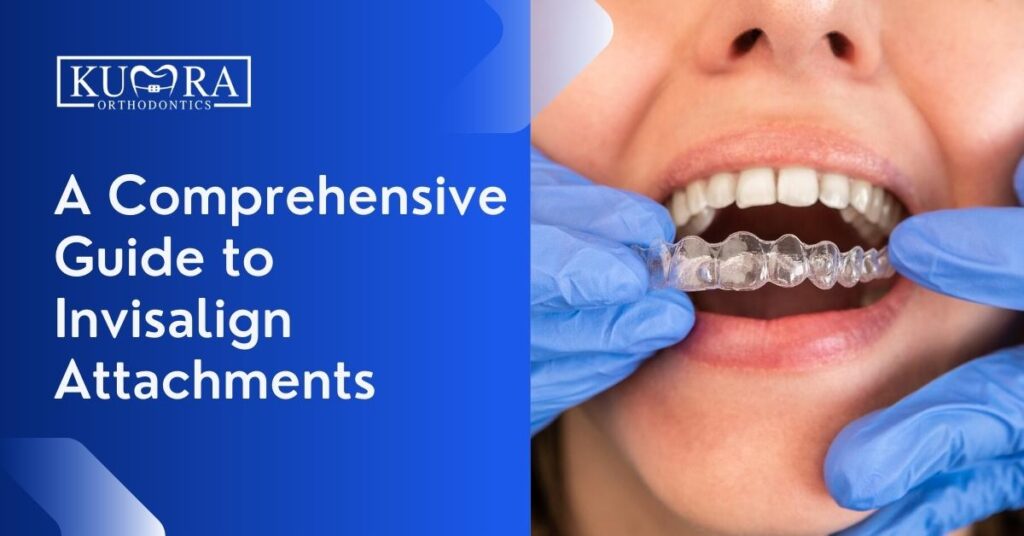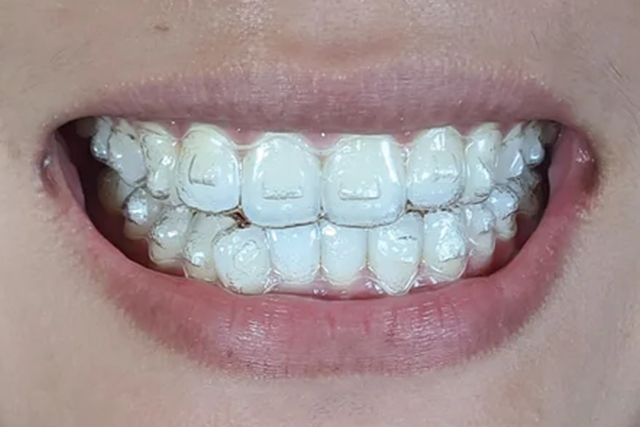Preserving Oral Health While Using Invisalign: Tips for a Smooth Experience
Preserving Oral Health While Using Invisalign: Tips for a Smooth Experience
Blog Article
Invisalign vs. Typical Braces: Which Option Is Right for You?
When thinking about orthodontic therapy, the choice between Invisalign and conventional dental braces offers numerous important factors that merit cautious analysis. Invisalign offers a discreet alternative with removable aligners, while standard dental braces offer a much more visible yet efficient option for serious misalignment. Each choice includes unique benefits and disadvantages connected to looks, convenience, therapy period, and cost. Understanding these nuances is important for making a notified decision that lines up with your individual preferences and way of life. The inquiry continues to be: which option will best satisfy your orthodontic requirements and assumptions?
Summary of Treatment Alternatives

On the other hand, standard dental braces consist of steel braces and cables that are adhered to the teeth. This technique uses continuous stress in time to achieve placement. While efficient for intricate orthodontic concerns, conventional dental braces need routine visits for changes and can present challenges in maintaining dental health due to the problem of cleansing around wires and brackets.
Both choices have their benefits, and the selection often pivots on certain oral conditions, way of life preferences, and person conformity. Ultimately, speaking with an orthodontic expert is vital for establishing one of the most suitable treatment strategy customized to specific demands. Recognizing the subtleties of each choice can dramatically affect the total success of orthodontic treatment.
Visual Factors To Consider
A considerable aspect influencing the option between Invisalign and standard dental braces is the aesthetic charm each treatment offers. Invisalign aligners are crafted from clear plastic, making them basically undetectable when put on. This very discreet appearance is particularly appealing to teens and grownups who might feel uneasy concerning their orthodontic therapy. The ability to maintain an all-natural smile throughout the positioning process can substantially improve the client's confidence in social and specialist settings.
On the other hand, conventional dental braces consist of steel brackets and cords, which can be a lot more noticeable. While innovations in orthodontic innovation have caused the development of smaller sized brackets and tinted elastics, traditional dental braces still maintain an even more conspicuous profile. For some people, the exposure of dental braces may prevent them from seeking needed treatment.
Eventually, the selection between Invisalign and standard braces may depend upon personal preferences regarding aesthetics. Individuals that prioritize discernment usually lean towards Invisalign, while those who are less worried concerning visibility may select typical braces. Understanding the aesthetic ramifications of each alternative is essential for making a notified choice that straightens with one's lifestyle and preferences.
Comfort and Convenience

In terms of convenience, Invisalign aligners are detachable, allowing clients to enjoy their favored foods without limitation and maintain optimum dental hygiene. Cleaning and flossing are streamlined, as the aligners can be gotten throughout these visit their website routines, whereas traditional dental braces need careful steering around cords and braces.
Additionally, Invisalign's dynamic system enables for less orthodontic brows through. Individuals typically get multiple collections of aligners at once, which can simplify the treatment procedure and decrease time invested in the orthodontist's chair. In contrast, traditional dental braces necessitate routine changes, making them less hassle-free for those with hectic timetables. Invisalign. In general, the convenience and benefit of Invisalign make it an enticing choice for lots of individuals looking for orthodontic therapy.
Treatment Period and Performance
While both Invisalign and conventional dental braces work in correcting dental imbalances, the period of therapy can differ substantially in between the 2 options. Normally, Invisalign therapy can take anywhere from 12 to 18 months, depending on the complexity of the situation. The clear aligners function by progressively changing teeth into their desired settings, and routine follow-ups with an orthodontist assistance make sure progression remains on track.
In comparison, typical braces frequently require a longer commitment, typically ranging from 18 months to three years. This is because of their fixed nature and the usage of braces and cables, which can be much more efficient for complicated cases and severe misalignments (Invisalign). The therapy performance of typical dental braces is well-documented, as they permit exact modifications and higher control over tooth motion
Eventually, the option between Invisalign and traditional braces might rest on both the awaited treatment duration and the particular click this link dental issues handy. Consulting with an orthodontist is important, as they can supply customized suggestions based on individual needs, guaranteeing the chosen approach straightens with preferred durations and results.
Expense Comparison and Insurance Policy Alternatives
Price plays a substantial function in the decision-making procedure for individuals considering orthodontic treatment, whether selecting Invisalign or standard braces. Typically, the cost of Invisalign varieties from $3,000 to $8,000, while conventional dental braces normally cost between $2,000 and $6,000. Factors affecting these expenses include the intricacy of the situation, the duration of therapy, and geographical location.
Insurance policy protection can considerably impact out-of-pocket expenditures. Numerous oral insurance policy plans offer partial coverage for orthodontic therapies, but the specifics can vary commonly. It is essential for people to evaluate their insurance coverage to identify the level of coverage for either choice. Generally, conventional dental braces might be much more regularly covered by insurance plans contrasted to Invisalign, which some insurance providers classify as an aesthetic procedure.
Additionally, a number of orthodontic methods supply adaptable payment plans, making both treatment choices a lot more obtainable. Patients ought to ask about possible funding alternatives and discounts for upfront payments. Assessing the overall cost, including insurance coverage benefits and repayment plans, is important for making a notified decision that aligns with both aesthetic preferences and budget factors to consider.

Final Thought
In summary, the option between Invisalign and standard dental braces hinges on several aspects, including aesthetic preferences, comfort, therapy duration, and cost. Invisalign offers a very discreet, detachable choice that assists in oral hygiene and nutritional adaptability, while typical braces may be preferable for complicated dental issues and usually come with a lower price factor. Inevitably, examination with an orthodontist is vital to evaluate individual circumstances and establish one of the most suitable therapy choice for achieving optimum oral alignment.
When taking into consideration here orthodontic therapy, the choice in between Invisalign and conventional dental braces provides several important variables that merit careful evaluation.Contrasting Invisalign and conventional dental braces exposes distinct therapy options for orthodontic correction.While both Invisalign and traditional dental braces are efficient in dealing with dental imbalances, the duration of treatment can differ substantially in between the two alternatives.Cost plays a considerable duty in the decision-making process for people taking into consideration orthodontic treatment, whether deciding for Invisalign or traditional braces.In recap, the choice between Invisalign and typical braces hinges on several factors, including aesthetic choices, comfort, treatment duration, and price.
Report this page